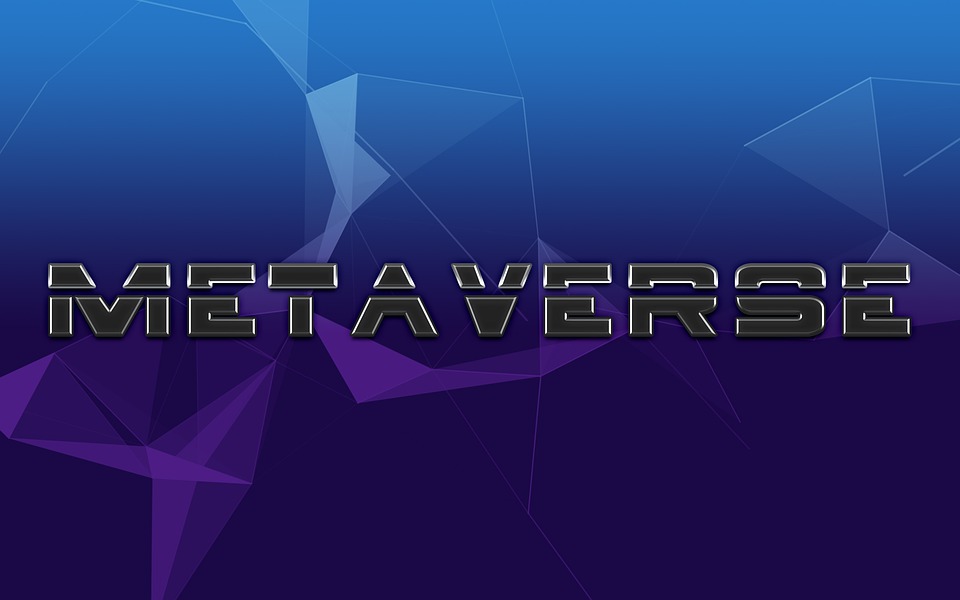Technology
How to Start a Metaverse Development Marketing Campaign
Different people have different ideas about what the metaverse is. For many digital immigrants, it’s the logical conclusion of Mark Zuckerberg’s evil plan to take over the world. But for marketers, it’s a new frontier that smart brands are already making money from.
In November, when Facebook said it would change its name to Meta, the news made headlines. The metaverse isn’t completely new, though. From Farmville to Second Life to League of Legends, players have been able to connect and talk to each other in virtual worlds for a long time, and paid and branded experiences have given them the chance to gain status and power.
What does the metaverse mean?
There isn’t just one metaverse, but people are starting to agree on what the term means. Bloomberg calls it the “next big technology platform” and defines the metaverse as “social, persistent, shared, virtual 3-D worlds.”
Bloomberg thinks the metaverse will be worth about $800 billion by 2024, while other people in the industry think it will be worth more than $1 trillion by then. That’s because content about the metaverse is very popular right now. For example, 50 million people use the user-generated Metaverse Game Development platform Roblox, which is used by half of all U.S. children.
As the opportunity grows, marketers are learning from gaming companies to create a whole new set of engaging brand experiences.
Confused? Intimidated? You’re not alone. Even for the most innovative brands, entering the metaverse can be scary because it takes careful planning and the right people to make the most of the opportunity.
Read more – The Tech Priest
How B2C brands are using the Internet to market
Stefanie Smith, a former IKEA executive and the CMO of MetaVRse, says that consumer brands are already flocking to the metaverse. MetaVRse is a code-free platform that makes it easy to create and instantly share interactive 3-D experiences on the web. She says, “Here we can do everything we’ve ever wanted to do in retail or 2-D e-commerce.”
This includes chances for brands to interact more deeply with engaged consumers, especially younger ones, and sometimes offering exclusive content rewards in exchange for engagement or co-creating content. Smith says, “We used to say that kids were digital natives, but now they’ll be metaverse natives.”
In fact, the metaverse is a virtual playground for forward-thinking companies like Vans, which made an interactive metaverse skatepark that more than 48 million people have been to. Now, Gucci has released an exclusive pair of digital sneakers, and IKEA, Chipotle, Louis Vuitton, and other brands have made their own branded metaverse experiences. Nike has also put a lot of money into the space to attract superfans and collectors. In the 3-D virtual world Decentraland, the auction house Sotheby’s built a virtual art gallery.
How B2B brands can use the Metaverse Marketing
JP Morgan has also joined the race by opening a lounge in Decentraland to teach clients about cryptocurrency and the metaverse. But other than that one example, it’s not easy to find B2B brands that are really getting into metaverse marketing. But that doesn’t mean that there aren’t a lot of chances. Smith says that other short-term use cases for B2B brands could be:
- Virtual locations or branches
- Online meeting rooms
- Virtual events
- Virtual campuses
- Centers for virtual training
- Virtual shopping and advertising
So, how can marketers at B2B tech, financial services, and healthcare firms successfully dip their toes into the virtual waters of the metaverse once they’ve chosen the right project to work on? Here are some ideas on how to start:
Pick a mode and a platform:
Do you want to use 3-D assets for e-commerce, a stand-alone WebAR experience, a minigame or an immersive experience in a VR environment or on another platform? Think about how you could use traditional marketing methods online. Companies are already buying “land” in metaverses like Decentraland and building malls where brands can buy space to interact with customers, sell products, or advertise.
Also Read Here: Metaverse Event Development Company : Future Of The Event Industry
Make your advertisement or event:
This step is a very important part of your strategy and tactics for the metaverse. Also think about how people will interact with the experience and what kind of technology will be needed.
Choose if you want to make your own space or use someone else’s:
Michael Cruz, Partner and Head of Content at experiential agency Summer Friday, says that this choice determines a lot, like where you’ll host your experience and how many people will follow you.
Think about starting a Discord group:
Even though Discord is not itself a 3-D virtual world, it is invite-only and has channels for chat, voice, and video. What makes it different from Slack and other social networks is that fans can get different levels of access based on their actions, interactions, or ownership of tokens. This is a direct link between the fast-growing metaverse and the cryptocurrency space. Cruz says that Discord shows how non-fungible tokens (NFTs) or cryptocurrencies can help brands build the kind of engagement they need to get into the metaverse. This is because the metaverse is all about community engagement. “Within my community, I can make a coin with its own value and use it as a tool to get more people interested in my project, get it used, and get real contributors,” he says.
Measuring metaverse marketing ROI and avoiding potential pitfalls
Many of the most advanced ways to market in the metaverse, like branded virtual reality games, can be hard to do because they are still mostly experiments. ROI is also hard to show. Instead of trying to boost short-term conversions or sales, you should look into metaverse marketing to build your brand and influence among your core customer groups.
The ROI for different ways of marketing in the Metaverse Development will be different. Immersive shopping experiences on WebAR, like IKEA Place, which is basically virtual furniture shopping, may have the lowest barriers to entry and the best brand value. Also, because both the content and the experience are interactive, it may one day replace shopping for furniture in person.
But the real power of metaverse marketing lies in deep customer engagement. Cruz says that if brands don’t do this, they are “just playing in someone else’s game.” And someone else’s game can contain someone else’s garbage. For example, Roblox has millions of experiences, but it’s still hard to keep an eye on them all for sex, violence, and other things that might be questionable.
Because there aren’t many rules about the metaverse, Cruz warns both B2C and B2B brands to be careful. Build a complete plan first, he says, or you might leave a “digital footprint” of your mistakes. Many brands that are getting serious about the metaverse are now hiring full-time help. Over the past year, hiring related to the metaverse has grown by a huge amount. There is also more and more metaverse marketing training for marketers who want to improve their skills.
Final Thoughts:
Making a smart plan, working with experts, and getting ready for a lot of change in the meantime. Building a strong community in the metaverse can be even harder than doing so through traditional social media, and it can definitely be more expensive.
As B2C brands continue to grab land in the metaverse, now is a great time for B2B brands to plan a smart way to take advantage of what is quickly becoming the next big digital marketing opportunity.





